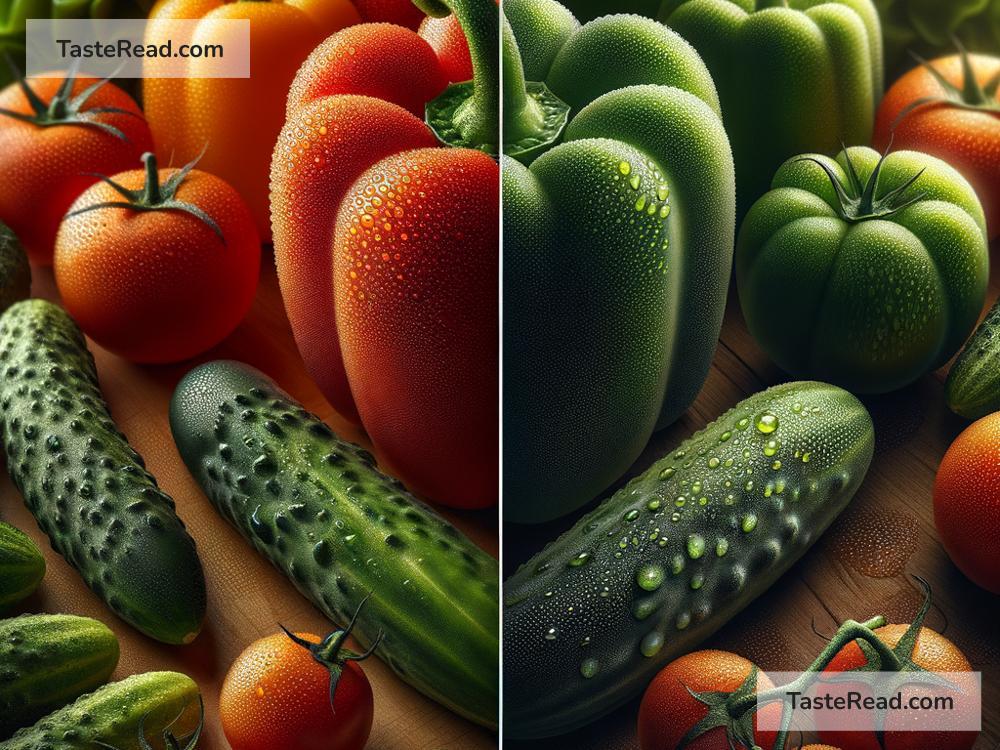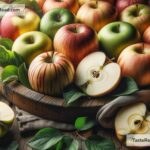The Effect of Humidity on Vegetable Texture and Taste
Have you ever noticed how vegetables taste and feel different depending on where you live or how you store them? Humidity, which is the amount of moisture in the air, plays a big role in how vegetables keep their texture and taste fresh. Whether you’re cooking a meal or storing veggies in your kitchen, understanding humidity’s effects can help you enjoy vegetables at their best.
What Is Humidity and Why Does It Matter?
Humidity refers to the amount of water vapor in the air. Some places have high humidity, like tropical regions where the weather feels sticky and hot. Other areas may have low humidity, like deserts, where the air feels dry. The humidity level can affect how vegetables grow, taste, and even how long they stay fresh.
Vegetables are made up of water, fiber, and nutrients. Keeping them fresh depends on maintaining their moisture content. If the air around them is too dry or too moist, it can change their texture and taste. That’s why knowing a little about humidity can make a big difference in how we store, cook, and enjoy vegetables.
How High Humidity Affects Vegetables
When the air has high humidity, it is filled with moisture. For vegetables, this is both good and bad. High humidity can help vegetables stay juicy and firm because the extra moisture prevents them from drying out. If you’ve ever stored leafy greens, like spinach or lettuce, in a humid environment, you’ve probably noticed how crisp they stay. High humidity also benefits root vegetables like carrots and potatoes, helping them stay plump and fresh longer.
However, too much humidity can have downsides. The excess water in the air can make certain vegetables soggy. For example, cucumbers or zucchini might lose their firmness and become mushy if left in a very humid place for too long. Humidity also encourages the growth of mold and bacteria, which can spoil vegetables faster. So, while high humidity can keep some vegetables hydrated, it needs to be monitored carefully to avoid spoilage.
How Low Humidity Affects Vegetables
Low humidity, on the other hand, means the air is dry and lacks moisture. In dry conditions, vegetables lose water more quickly. This process, called dehydration, can make vegetables shrink, wrinkle, and lose their juicy texture. If you’ve ever left carrots or bell peppers in a dry fridge without proper storage, you may have noticed they become limp or rubbery over time.
Low humidity can also impact the taste of vegetables. When vegetables lose water, the sugars and flavors inside them become more concentrated. For example, tomatoes stored in dry conditions may taste sweeter, but they might sacrifice their plump and juicy texture. In contrast, leafy greens like kale or spinach can lose their crunch and feel dull.
Some vegetables like onions and garlic actually prefer low humidity. These vegetables are less likely to sprout or rot in dry conditions, making low humidity ideal for storing them. Understanding which vegetables thrive in dry or moist environments helps us make smarter storage choices.
Balancing Humidity for Better Vegetable Storage
So, how can you keep your vegetables fresh and delicious? The key is balancing humidity. Different vegetables have different needs:
-
High-Humidity Vegetables: Vegetables like broccoli, cauliflower, greens, and celery need more moisture to stay fresh. Store these in the fridge with high humidity settings or use a damp paper towel to keep them hydrated.
-
Low-Humidity Vegetables: Onions, garlic, and winter squash like butternut squash do better in a dry environment. Keep them outside the fridge in a cool and dry place.
-
Middle Ground: Tomatoes, cucumbers, and peppers can handle moderate humidity. Some prefer room temperature, while others do well in the fridge with no added moisture.
If you use a fridge with adjustable humidity drawers, you can set these drawers based on the vegetable’s needs. High humidity prevents leafy greens from drying out, while low humidity keeps onions and garlic in good shape.
Humidity and Cooking
Humidity affects vegetables not just during storage but also when cooking. In high-humidity environments, roasted vegetables may not get as crispy because the moisture in the air prevents proper browning. On the other hand, steaming vegetables in a humid environment helps them retain their moisture and nutrients.
Low humidity can make grilling or roasting vegetables more effective, as the dry air helps create a caramelized crust. It’s worth experimenting with different cooking methods depending on your local climate to get the best texture and flavor.
Final Thoughts
Humidity plays an important role in how vegetables taste, feel, and stay fresh. While high humidity keeps certain vegetables juicy and crisp, it can also cause spoilage. Low humidity helps prevent rot but may dry out some vegetables and alter their texture.
By understanding how humidity affects different kinds of vegetables, you can store and cook them in ways that highlight their natural taste and texture. Whether you’re in a dry desert or a humid tropical area, being mindful of humidity is one of the secrets to enjoying vegetables at their best. After all, fresh and flavorful veggies make every meal more delicious!


